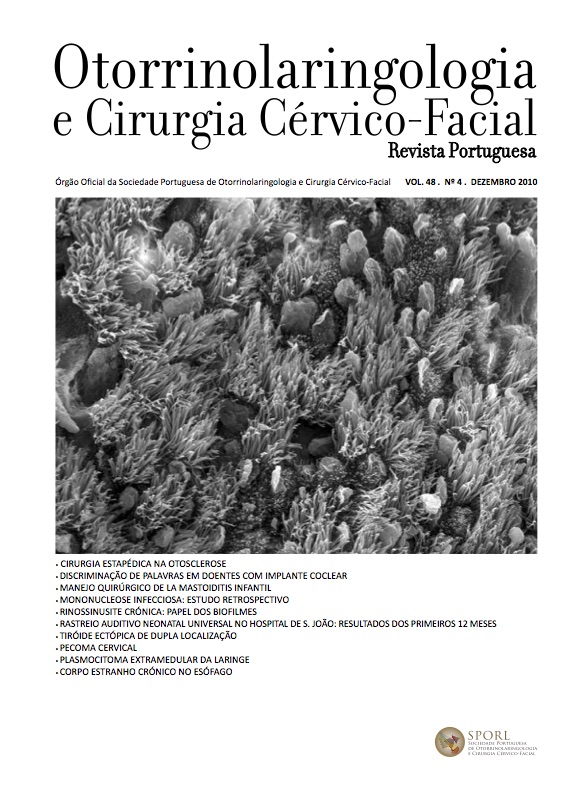Comparative study of words and sentences discrimination - free field and through telephone in cochlear implant pacients
DOI:
https://doi.org/10.34631/sporl.209Keywords:
Telephone, Cochlear implant, Auditory discriminationAbstract
Using the telephone in everyday communication and social interaction allows the profoundly deaf implanted pacient to increase his independence and self-esteem. Being able to perform this task means having the hability to discriminate speech without lip reading or any other cue. The present paper aims to evaluate speech discrimination limitations in cochlear implant users performing through telephone. 70 patients with cochlear implant using the speech processor for more than 4 months were evaluated. They were divided in two groups: group 1 states using the telephone and group two states not using it. The results show no statistical differences in free field tonal threshold with cochlear implant between both groups. Regarding speech discrimination tests, there is statistical difference between both groups, having group 1 a better performance. When comparing the sentences and word discrimination tests’ results in free field and through telephone, the performance is better in free field.
Downloads
References
Anderson I, Baumgartner W, Böheim K, Nahler A, et al. Telephone Use: What Benefit do Cochlear Implant Users Receive? Int J Audiol,
;5(8):446-53.
Calvo A. El uso del teléfono en pacientes con implante coclear. s.l. : Revista de Logopedia, Foniatria y Audiologia, 2004;24(3):132-36.
Ito J, Nakate M, Fijita S. Hearing ability by telephone of patients with cochlear implants. Otolaryngol Head Neck Surg. 1999;121:802-04.
Giles, E.C. An outline of telephone training procedures at the Manchester Cochlear Implant Center. in J.L Hochmair.Desoyer e E.S. Hochmair (eds.). s.l. : Advances in Cochlear Implants. Vienna: Manz, 1994:pp.604-08.
Giles E. Telephone training with a cochlear implant. in K. Peddley, E. Giles e A. Hogan (eds) Adults cochlear implants rehabilitation. London : Whurr, 2005:pp.219-44.
Cohen N., Waltzman S, Shapiro W. Telephone speech comprehension with use of the Nucleus cochlear implant. s.l. : Ann Otol Rhinol Laryngol, 1989;8:811.
Cray J, Allen R, Stuart A, Hudson S, et al. An Investigation of the Telefhone use Among Cochlear Implant Recipients. s.l. : Am J Audiol,
;13:200-212.
Wieker A, Tearney L. A cochlear implant user´s guide to assistive device and telephones. s.l. : The Hearing Journal, 2004;57(11):20-26.
Martins, JH., et al. Validação de listas de monossílabos, números e frases para audiometria vocal em adultos. s.l. : Clinica e Investigação em
Otorrinolaringologia, 2009;3:54-59.






